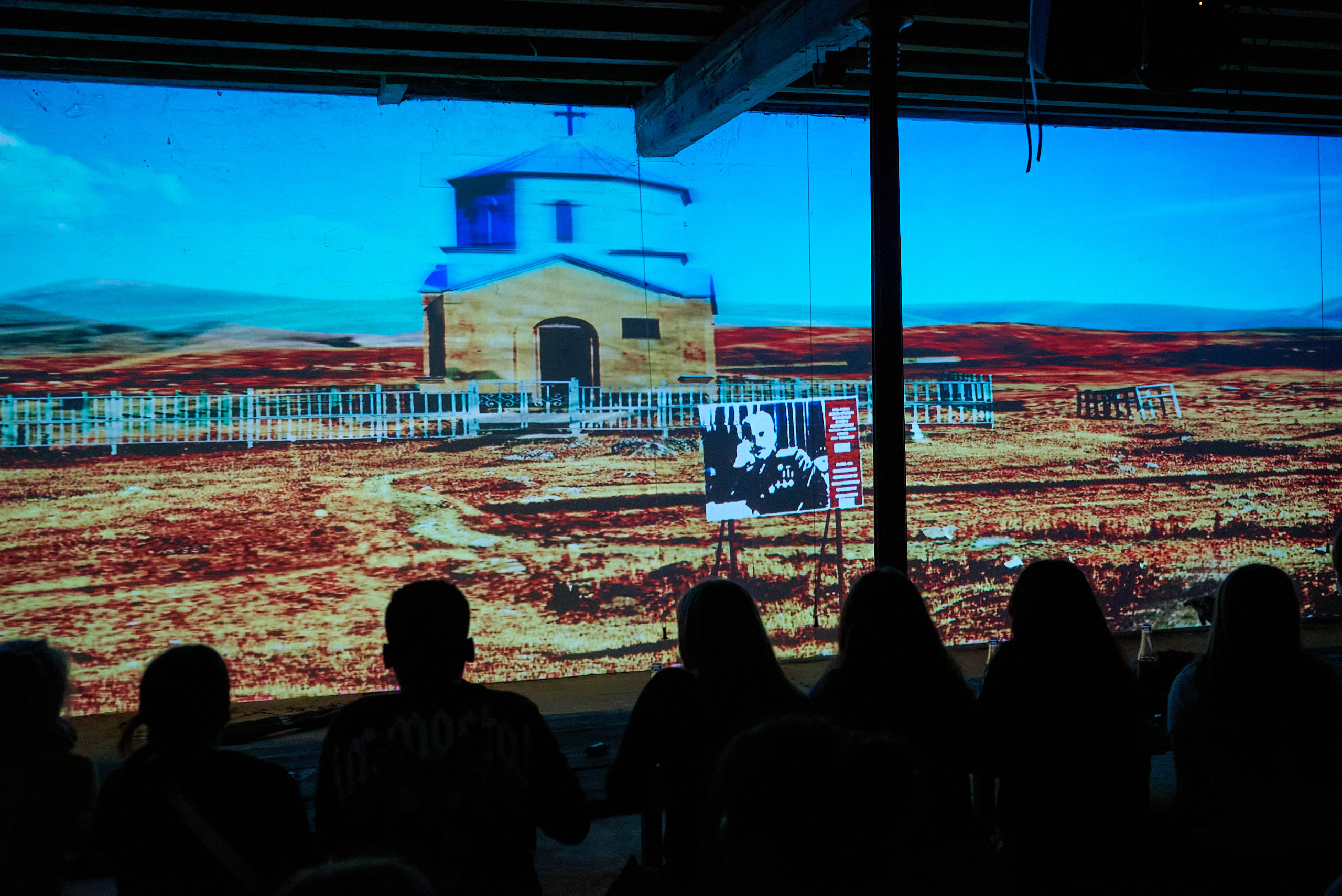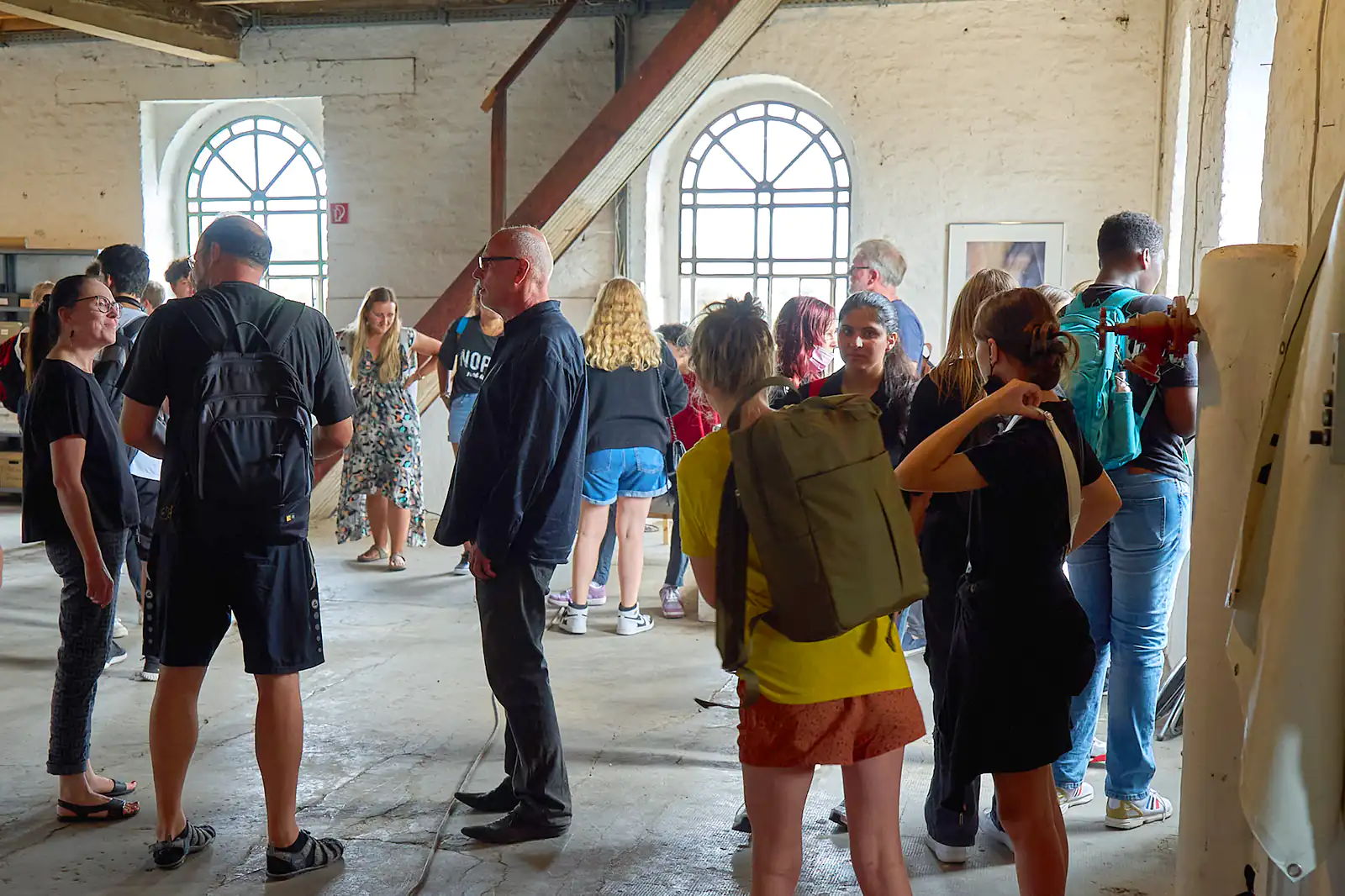




























Road movie in inconceivable slowness
KARI-K’AMI – a camera trip from Georgia to Armenia
Video-sound-installation in the Reuschenberger Mühle Leverkusen
Area Composer: Where is the right place to tell about a journey? It is the place of return home. There, where we unpack what we have brought with us and put all the impressions in order: Our studio in the Reuschenberger Mühle in Leverkusen. There we want to show our work to children and young people who have never experienced Area Composing before. How would they perceive this infinitely slow journey through the Caucasus?
The Area Composing KARI-K’AMI was presented for the first time on 18 August 2022 to pupils of a Düsseldorf Gesamtschule (comprehensive school) who are themselves experimenting with audiovisual projections. We were fascinated by their reactions:

»It really is an art to deceive the audience in such a way. It seems like everything used to be one image that gradually changed.« – Lea (16)
»I saw a lot of different things in the images that weren’t even there..« – Noreli (13)
»The music suited so well that sometimes I thought I was live in this place.« – Anissa (13)
»It is impressive how completely different thoughts came into everyone’s head. This is what makes us all different from each other – the way our minds work.« – Jagoda (16)
»I liked the fact that the photographer didn’t just take images of the „beautiful“ sides of the country. In my opinion, there is no such thing as beauty and ugliness. Everything is beautiful in its own way, you just have to discover the beauty.« – Maja (16)

Caucasian airstream in an image-sound composition
KARI-K’AMI – these are the Georgian and Armenian words for airstream. This airstream runs through the Area Composing as a leitmotif in both sound and images. Peter Hölscher takes the photographs from a driving car on his journey from Georgia to Armenia. What the camera captures in these irretrievable moments of the journey he can hardly control. Only after his return the treasure is revealed – a tense moment. In developing the images, he crystallises intense colours and astonishingly concrete motifs. His image composition shows the bizarre interventions of man in the archaic landscape of the Caucasus and the destruction caused by earthquakes and war: ruins from which new life grows.
The simultaneity of beauty and decay, joy and pain also characterises the sound composition that Ronald Gaube builds on the dramaturgy of the images. Sounds of instruments typical for the region, such as duduk and dhol, mix with organ and string sounds, industrial and natural noises. The voices of the landscape and the people penetrate the airstream and seem to tell the story of this place where our culture originated. A special sound moment is the soprano saxophone played by Dorothee Pilavas at the end of the composition.






Children and young people visiting Area Composer
How do children and young people experience Area Composing? Can they stand the extreme slowness of the images without getting bored? How do they perceive the intensity of the sound? We were curious when technology teacher Uwe Pongs from the Freie Christliche Gesamtschule Düsseldorf came to our studio with his project group Art.Bot.Lab. 25 children and young people between the ages of 12 and 17 climbed the stairs of the Reuschenberger Mühle and were surprised at the old walls hiding modern technology. A thousand questions rushed in, but when KARI-K’AMI started, silence fell. Enthusiasm, fascination and the most diverse associations were the result of the 30-minute performance – and then they immediately wanted to experience the next Area Composing.